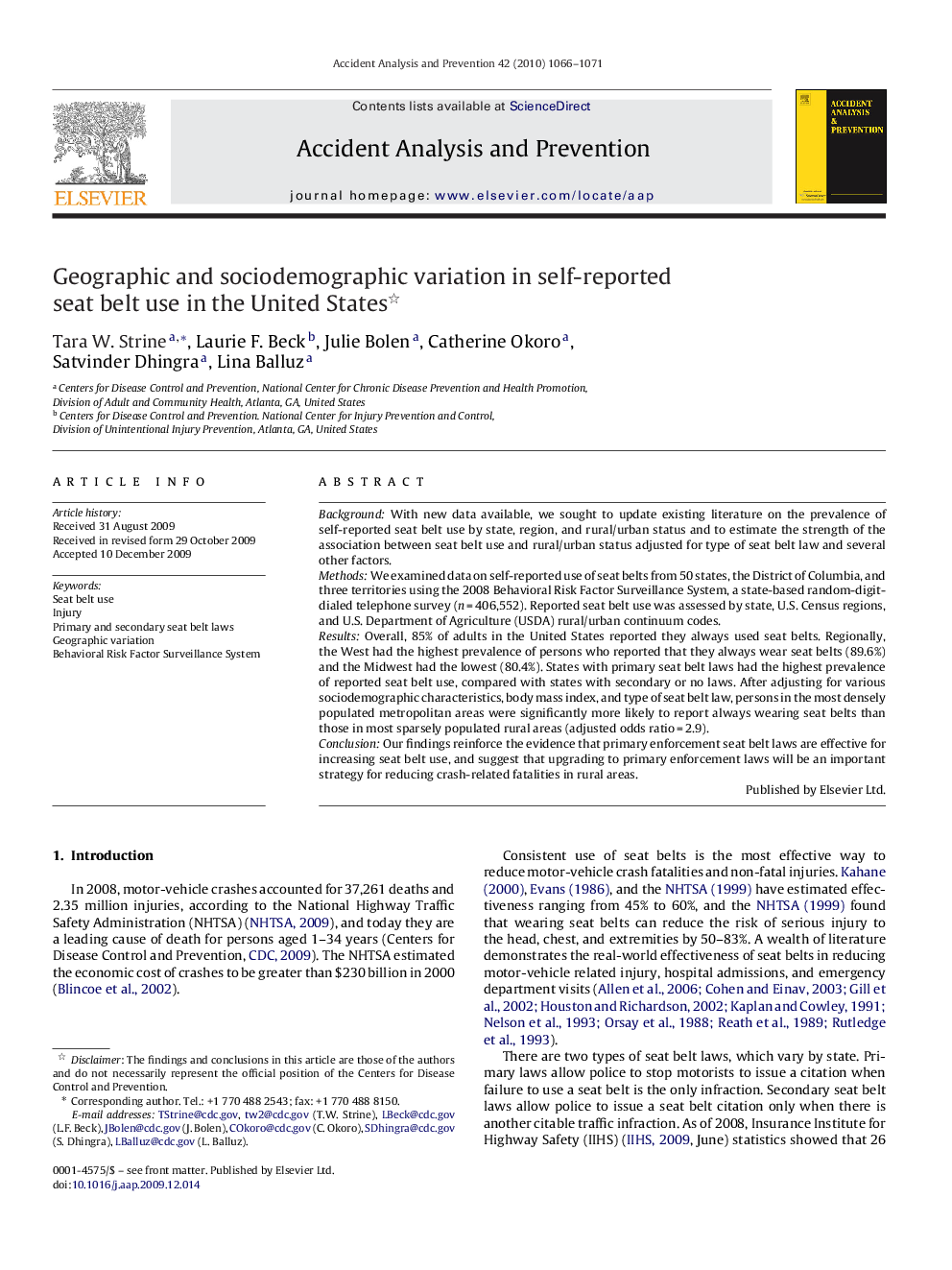| Article ID | Journal | Published Year | Pages | File Type |
|---|---|---|---|---|
| 573034 | Accident Analysis & Prevention | 2010 | 6 Pages |
BackgroundWith new data available, we sought to update existing literature on the prevalence of self-reported seat belt use by state, region, and rural/urban status and to estimate the strength of the association between seat belt use and rural/urban status adjusted for type of seat belt law and several other factors.MethodsWe examined data on self-reported use of seat belts from 50 states, the District of Columbia, and three territories using the 2008 Behavioral Risk Factor Surveillance System, a state-based random-digit-dialed telephone survey (n = 406,552). Reported seat belt use was assessed by state, U.S. Census regions, and U.S. Department of Agriculture (USDA) rural/urban continuum codes.ResultsOverall, 85% of adults in the United States reported they always used seat belts. Regionally, the West had the highest prevalence of persons who reported that they always wear seat belts (89.6%) and the Midwest had the lowest (80.4%). States with primary seat belt laws had the highest prevalence of reported seat belt use, compared with states with secondary or no laws. After adjusting for various sociodemographic characteristics, body mass index, and type of seat belt law, persons in the most densely populated metropolitan areas were significantly more likely to report always wearing seat belts than those in most sparsely populated rural areas (adjusted odds ratio = 2.9).ConclusionOur findings reinforce the evidence that primary enforcement seat belt laws are effective for increasing seat belt use, and suggest that upgrading to primary enforcement laws will be an important strategy for reducing crash-related fatalities in rural areas.
